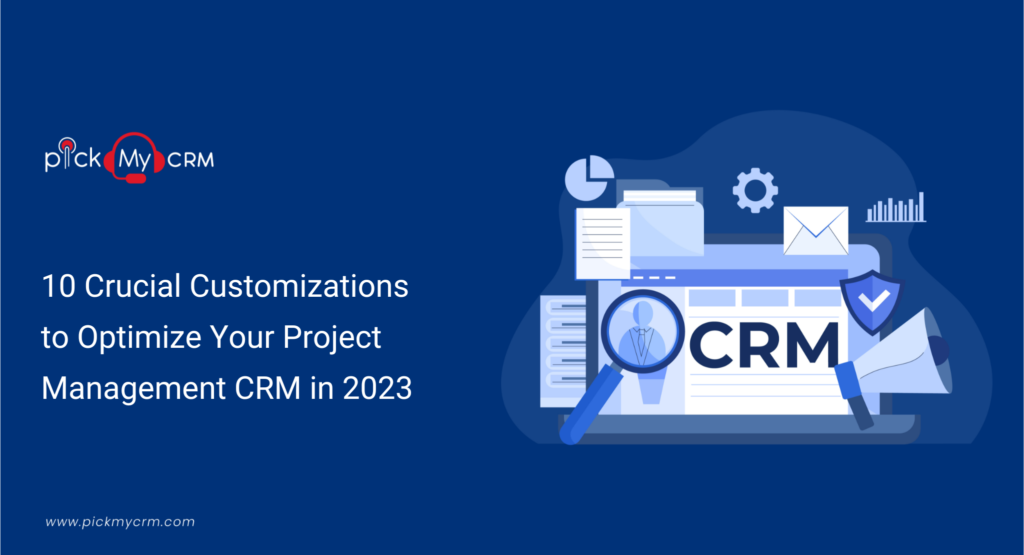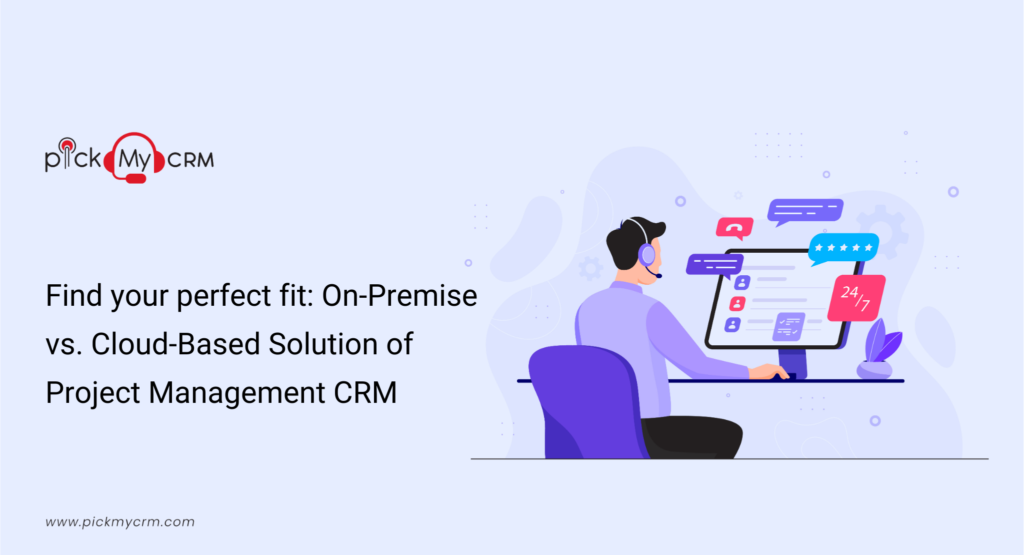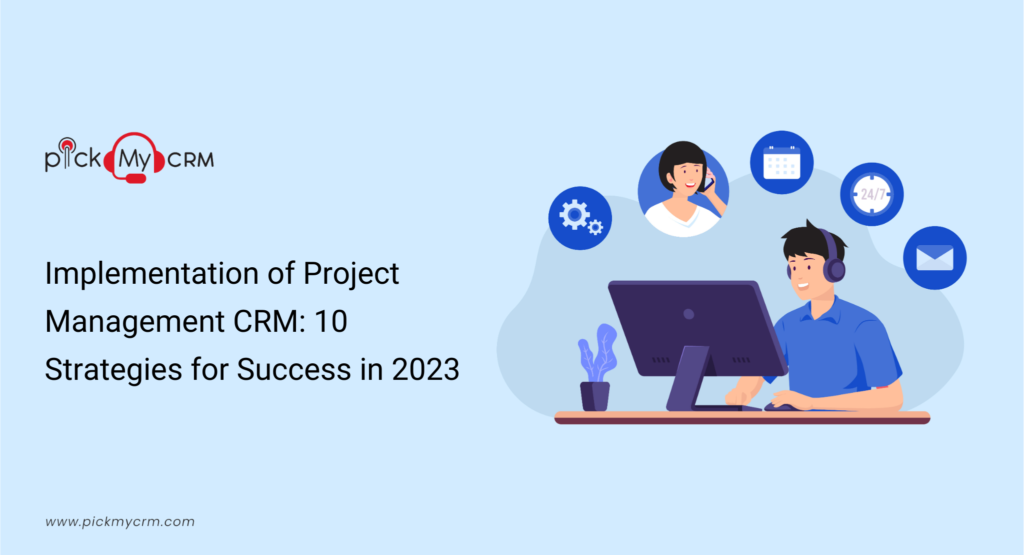10 Steps for The Symphony of Project Management CRM Integration in 2023
- A recent industry survey underscores that 89% of organizations leveraging integrated Project Management and CRM systems have witnessed enhanced project success rates.
- An impressive 82% of businesses report elevated customer satisfaction and improved team collaboration after integrating these systems.

10 Steps: Integration of Project Management CRM
Integrating Project Management and Customer Relationship Management (CRM) systems is a multifaceted process that requires careful planning, coordination, and execution. Here's a comprehensive guide to navigate through the essential steps for successful Integration,Define Objectives and Scope
Start by establishing clear goals and objectives for the Integration. Identify what specific aspects of project management and CRM you aim to integrate. Determine the scope of the Integration, including the processes, data, and functionalities involved.Choosing the Right CRM and Project Management Systems
Selecting the right CRM and project management software is paramount. Consider factors such as scalability, compatibility, customization options, and user-friendliness. Popular CRM solutions like Salesforce, HubSpot, or Zoho CRM offer robust integration capabilities with various project management tools. Research and choose a combination that suits your specific needs.Form a Cross-Functional Team
Assemble a diverse team comprising IT experts, project managers, CRM specialists, and representatives from relevant business units. This cross-functional team brings varied expertise and viewpoints to the integration process.Assess Current Systems
Conduct a thorough assessment of your existing project management and CRM systems. Understand their strengths, weaknesses, and how they currently interact. Identify any gaps, redundancies, or opportunities for improvement that Integration could address.Plan Data Mapping and Mapping
Design a data mapping strategy that defines how information will flow between the project management and CRM systems. Map out data fields, formats, and structures to ensure seamless data exchange while maintaining accuracy.Develop Customization Strategy
Create a plan for customizing the integrated solution to match your organization's unique processes. Define the approach for adjusting interfaces, workflows, and functionalities to cater to specific needs and requirements.Implement Integration Tools
Implement the essential tools, software, and application programming interfaces (APIs) needed for the Integration process. Ensure seamless compatibility of these tools with your project management and CRM systems for a harmonious integration process.Test and Quality Assurance
Rigorously test the integrated solution before making it live. Perform data integrity tests to ensure accurate data transfer. Conduct real-world simulations to assess how the Integration handles different scenarios. Involve end-users in user acceptance testing to identify any issues or usability concerns.Provide Training and Support
Prepare your teams for the new integrated environment. Offer comprehensive training sessions to familiarize users with the integrated system's features and functionalities. Establish a support mechanism to address questions, concerns, and technical issues as they arise.Monitor and Refine
Once the Integration goes live, diligently monitor its performance and assess its impact. Gather feedback from users and stakeholders to pinpoint challenges or opportunities for enhancement. Continuously examine data and metrics to validate integration meeting intended objectives. Adapt and refine the Integration as needed, keeping in step with evolving requirements and feedback. By following these meticulous processes, your organization can navigate the intricate process of integrating Project Management and CRM systems. This Integration isn't just about connecting software; it's about aligning processes, optimizing resources, and enhancing customer relationships to drive operational excellence and business success.Integration of Project Management CRM: Why Matters?
Integrating Project Management CRM offers a multitude of compelling reasons driven by the need for enhanced efficiency, improved communication, and strategic decision-making. Here's why organizations are increasingly opting for this Integration,- Efficiency Boost: Streamlined workflows and reduced manual effort through integrated systems.
- 360-Degree Perspective: Unified view of project progress and customer interactions.
- Collaborative Power: Enhanced coordination between project teams and customer-facing roles.
- Informed Choices: Data-driven decisions by analyzing project and customer data together.
- Clear Communication: Prompt updates and minimized miscommunication for better outcomes.
- Customized Approach: Tailoring projects to meet individual client needs for personalized services.
- Resource Optimization: Efficient allocation of resources based on project and customer demands.
- Risk Management: Early identification and mitigation of potential project challenges.
- Competitive Edge: Demonstrates efficiency, leading to customer loyalty and referrals.
- Relationship Building: Anticipating customer needs for long-term trust and growth.
When is the Right Time: Integration of Project Management CRM
Determining the ideal moment for integrating Project Management CRM is crucial for a seamless transition and maximum impact. The right timing depends on several factors, including your organization's readiness, ongoing projects, and strategic goals. Here are the considerations to identify the right time,- Project Complexity: Assess whether ongoing projects are at a stage where Integration won't disrupt critical milestones. Completing major project phases or initiating new ones can be opportune times.
- System Evaluation: Assess your current project management and CRM systems. If the system is outdated, deficient in essential features, or hindering productivity, Integration might present a viable solution.
- Technology Landscape: Consider technological changes and trends in the industry. Integration might align with technology upgrades or new software implementations.
- Change Management: Gauge your team's adaptability. If your team is changing, integrating during periods of relative stability can ease adoption.
- Customer Interaction: If customer feedback indicates a need for improved communication or personalized service, integrating CRM with project management could address those needs.
- Strategic Planning: Align Integration with your organization's strategic roadmap. If enhanced collaboration and customer-centricity are priorities, Integration aligns well.
- Capacity and Resources: Ensure you have the necessary resources for Integration, including time, budget, and skilled personnel.
- Transition Periods: Integration during slower business periods can minimize disruptions. For instance, consider integrating during holiday seasons or traditionally slower months.
- Preparation Time: Allow amplifying time for planning, testing, and training before full Integration. Rushing the integration process can lead to complications.
- Feedback Loop: Regularly collect input from project teams and customer-facing roles. When challenges that Integration can resolve are articulated, it may be the right time to move forward.
- ROI Analysis: Assess the possible return on investment. If Integration's advantages surpass the costs within a reasonable timeframe, it signals a green light to proceed.
How to test a Project Management CRM integration?
The testing phase for Project Management CRM integration is vital to guarantee smooth operations and accurate data. Here's a comprehensive guide on efficiently conducting integration tests,- Data Integrity Testing: Verify accurate and consistent data transfer.
- Workflow Validation: Test end-to-end processes for smooth functionality.
- User Acceptance Testing (UAT): Engage users to ensure Integration meets their needs.
- Real-time Data Sync Testing: Confirm real-time synchronization of updates.
- Error Handling Testing: Assess how Integration handles data exchange errors.
- Performance Testing: Evaluate scalability and load handling.
- Security Testing: Ensure data security and access controls.
- Reporting Testing: Validate integrated reporting and analytics.
- Rollback Testing: Verify the ability to revert to previous states.
- Compatibility Testing: Test across devices and platforms.
- Regression Testing: Check for new issues or disruptions.
- Documentation Review: Confirm the accuracy of integration documentation.
- Continuous Monitoring: Implement tools for post-integration anomaly detection.
Where to Implement Project Management CRM Integration?
The Integration of Project Management CRM spans diverse industries and business functions, aiming to boost efficiency, collaboration, and customer satisfaction. Below are sectors where Integration yields significant benefits,- Technology Companies: Enhance product development, execution, and customer support.
- Construction and Engineering: Manage complex projects and optimize resource allocation.
- Marketing and Advertising: Streamline campaigns and personalize customer interactions.
- Healthcare Industry: Coordinate patient care and improve communication.
- Financial Services: Track projects, offer tailored solutions, and enhance client communication.
Who Should Lead the Integration?
In the context of spearheading the Integration of Project Management CRM systems, a multifaceted strategy frequently proves most efficacious. The mantle of responsibility should rest upon a cross-disciplinary group encompassing IT, project management, customer service, and executive leadership. This collaborative method guarantees a comprehensive treatment of Technical, Operational, and Strategic facets.Types of Integration Strategies
Delving into Strategies for Effortless Integration of Project Management CRM- Data Synchronization Integration: Real-time Exchange of customer and project data ensures both teams are always aligned and informed.
- Process Automation Integration: Automating workflows by integrating systems accelerates task assignments, progress tracking, and updates.
- Communication Integration: Centralizing project discussions and customer interactions improves transparency and responsiveness.
- Analytics Integration: Incorporating CRM data into project analysis enables data-driven decision-making and performance optimization.
- Feedback Loop Integration: Integrating customer feedback channels with project teams drives continuous improvement and adaptation.
- Cloud Integration: Leveraging cloud technology to connect systems across locations and facilitate real-time collaboration.
- API Integration: Utilizing APIs to integrate specific functionalities, ensuring seamless data exchange and functionality sharing.
Challenges of Project Management CRM Integration
- Data Quality and Consistency: Ensure accurate and consistent data between systems to prevent errors and miscommunication.
- Data Security and Privacy: Comply with data security and privacy regulations to protect sensitive information.
- Integration Complexity: Address technical complexities and potential custom development needs.
- Customization and Scalability: Customize systems to align with business processes and ensure scalability.
- User Adoption: Implement training and change management strategies to promote user acceptance.
- Cost: Consider integration costs, encompassing development, licensing, and continuous support.
- Technical Compatibility: Ensure compatibility concerning hardware, software, and configurations.
- Real-Time Data Sync: Address the challenge of real-time data synchronization for performance and accuracy.
- System Updates and Maintenance: Manage system updates and maintenance to keep Integration functional.
- Change Management: Prepare for workflow changes and employee adaptation to the integrated systems.
- Vendor Support: Assess the level of support provided by CRM and project management software vendors.
- Monitoring and Troubleshooting: Implement monitoring and troubleshooting procedures for ongoing performance.



